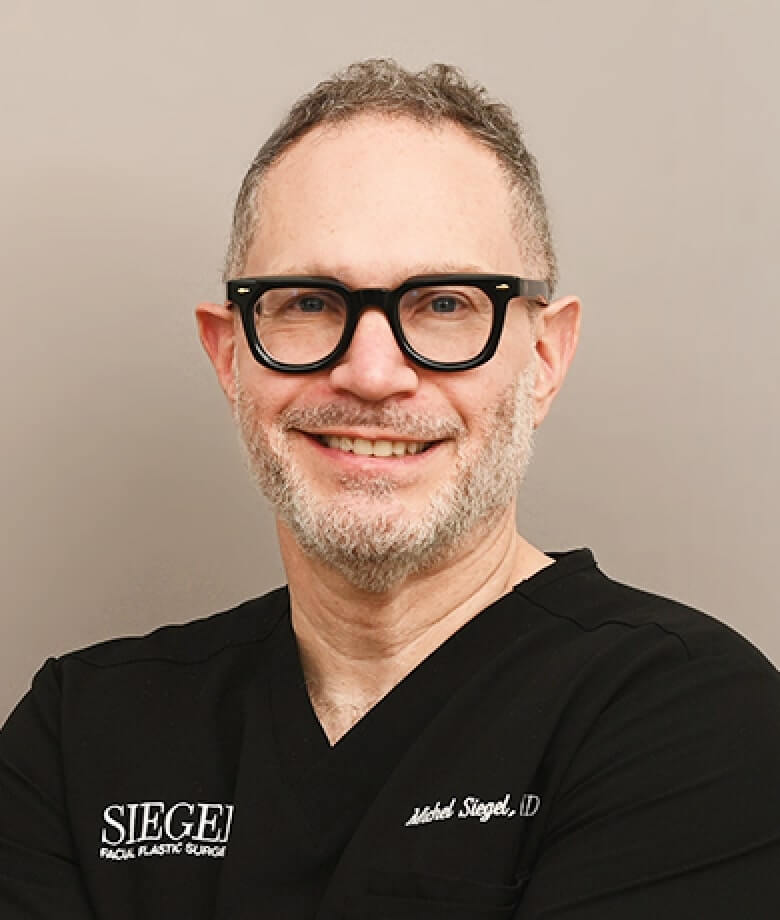Revision Facelift
Premier Houston Rhinoplasty Surgeon Dr. Michel Siegel
A revision facelift, also called a secondary or corrective facelift, is performed to improve on the results of previous facial surgery.
Patients may seek a corrective procedure for any number of reasons. Among the most common reasons is a tight or pulled appearance, accompanied by residual aging signs, such as jowls or a loose neck, which are usually noticeable after traditional SMAS facelifts. SMAS facelifts, regardless of the type performed (mini facelift or full facelift) attempt to rejuvenate the face by “pulling” on the SMAS, or superficial muscles of the face. However, the SMAS is a fixed structure that has very limited mobility. A surgery that relies on pulling often creates a pulled look.
Dr. Siegel’s experience and expertise allows him to correct less-than-optimal facelift outcomes. Often he does that with a deep plane facelift, which is only performed by a few surgeons in the US.
Through a deep plane facelift, Dr. Siegel can work below the SMAS – that is, “deep” under the muscles of the face – releasing all the tension associated with the facial structures. Rather than ‘pulling” on the muscles, this approach gives him the ability to reposition the skin, muscle and fat compartments as one unit. The overall effect of this approach is a re-volumization, giving your face a more natural and youthful appearance.
Note: Dr. Siegel performs deep plane facelifts exclusively, and has since 2018. Most surgeons do not or cannot offer the deep plane facelift, because it requires extensive training and experience. Patients seek deep plane facelifts because they avoid the “pulled” look, produce less swelling, require less recovery time, and their longevity is twice as long as traditional procedures’. Find out more about the deep plane facelift here.

Why choose Dr. Michel Siegel for your facelift?
The success of your facelift surgery depends above all on the facial surgeon you pick.
Facelift is not just another procedure offered by Dr. Siegel: He is a facial surgery specialist. He is double board certified (abohns.org and abfprs.org). Those certifications and his 20+ years of facelift experience.
Facelift surgery has evolved quickly in the last ten years or so. You need a surgeon who has evolved along with it. The best newer technique, deep plane facelift, results in a more-natural-looking outcome, avoiding the wind-swept look often associated with facelifts.
Facelift is an art. It takes years for the surgeon to be able to create a look that’s balanced and that maintains your essence.
Facelift is more than just a surgical procedure. It is a series of personal decisions, followed by a series of medical and aesthetic decisions. Dr. Siegel will work with you every step of the way. You will not be handed off to an assistant or a junior associate. We remain a small boutique practice providing not only exceptional surgical results and personalized care.
Find out even more about why to choose Dr. Siegel, or contact us to discuss your perfect look.

